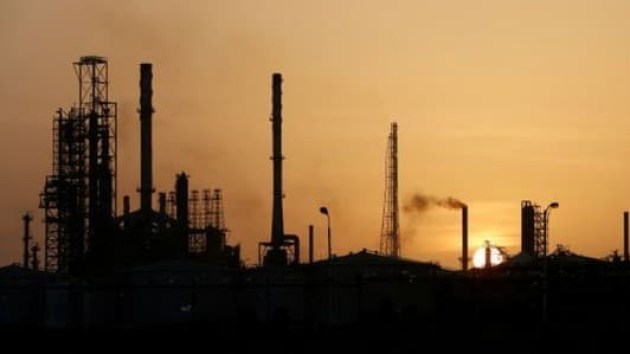
Venezuela’s near-collapse and strict U.S. sanctions are creating an opportunity for Russia, Iran and China to strengthen their presence in Latin America, a region that for decades has been under U.S. hegemony. While Russia and Iran have, to an extent, gained a foothold in Venezuela by providing crucial support to the embattled Maduro regime, it is China that stands to benefit the most if it can secure a close relationship with the socialist authoritarian regime.
By Oil Price – Matthew Smith
Sep 8, 2021
Venezuela is endowed with tremendous oil wealth with the pariah South American country possessing the world’s largest petroleum reserves of 304 billion barrels. The growing desperation within Caracas, caused by the petrostate’s near-collapse, has created an opportunity for China to exploit Venezuela’s vast hydrocarbon resources. This could not occur at a more crucial juncture for China with the country overtaking the U.S. to become the world’s largest refiner and the largest importer of crude oil. China’s endless thirst for petroleum, which is a crucial source of energy for its growing economy, is forcing Beijing to look at obtaining greater access to oil supplies around the globe. China’s state enterprises have shown a willingness to circumvent U.S. sanctions to receive crude oil imports from Venezuela and Iran.
Growing pressure to obtain additional crude oil supplies saw Chinese logistics firm China Concord Petroleum Co, known as CCPC, emerge as a leading player in circumventing U.S. sanctions to supply Venezuelan crude oil to East Asian refiners. The firm’s importance is highlighted by data sourced by news agency Reuters which shows that during April and May 2021 vessels charted by CCPC carried more than a fifth of Venezuela’s oil exports during those months. According to a Reuters investigation, CCPC has acquired at least 14 petroleum tankers to transport Venezuelan and Iranian crude despite Washington’s sanctions against both pariah states. By July 2021, Venezuela’s oil exports grew for a second straight month reaching 713,097 barrels per day with most of that crude oil destined for China.
After abandoning directly extracting Venezuelan crude oil in August 2019 as a response to the stricter sanctions applied by the Trump administration, Beijing is focusing on expanding its presence in the OPEC member. Reportedly, state-controlled China National Petroleum Corp, or CNPC, is sending staff to Venezuela in preparation for investing in operations as President Maduro finalizes legislation aimed at facilitating greater private control of energy projects. That legislation the authoritarian leader hopes will attract the foreign investment urgently required to rebuild Venezuela’s shattered petroleum industry thereby allowing Caracas to reconstruct Venezuela’s failing economy. CNPC is also in negotiations with PDVSA regarding ramping up production at five joint ventures it has with Venezuela’s national oil company.
The importance of attracting foreign investment is emphasized by the parlous state of Venezuela’s once-mighty oil industry with production continuing to decline. By August 2021 oil output for PDVSA and its foreign partner was reported to be an average of 520,000 barrels per day, or slightly less than the 524,000 barrels pumped a month earlier and significantly less than the 713,097 barrels exported by Caracas for that month. Unsurprisingly, July’s oil output is well below the target set by petroleum minister Tareck El Aissami, who in a June 2021 Bloomberg interview stated production will rise to 1.5 million barrels by the end of this year. To meet that ambitious target Venezuela would need to almost triple average daily oil production from July 2021 levels.
The only means of reaching such an ambitious target and eventually returning Venezuela’s oil production to over 2 million barrels daily is by attracting significant foreign capital. PDVSA believes it will take $58 billion to restore production to pre-Chavez 1998 levels of around 3 million barrels per day. Whereas, Maduro has indicated that investing as little as $30 billion will boost production potentially to as much as 5 million barrels daily. Those numbers based on the analysis conducted by other industry experts appear implausible with a far larger investment needed. Leading industry-academic Francisco Monaldi director of the Latin America Energy Program at the Houston-based Center for Energy Studies at Rice University’s Baker believes Maduro’s and PDVSA’s estimates are overly optimistic. In a February 2021 policy brief, Monaldi explained it would take an investment of $10 to $12 billion annually for a decade, “over $110 billion in total” for Venezuela to lift crude oil output to 1 million barrels per day within two years and then reach 2.5 to 3 million barrels daily by the end of 10 years.
Other sources including the economic advisers to the U.S. recognized interim President Juan Guaido’s estimate it will require an even greater investment, potentially up to $250 billion to reach pre-Chavez production of over 3 million barrels per day.
Even Maduro’s moves to create a more investor-friendly environment for international oil companies have not attracted the significant capital required to resurrect Venezuela’s rapidly corroding petroleum industry. This is because Washington’s strict sanctions, notably those imposed by the Trump administration during 2019 which cut Caracas off from global energy and capital markets, are deterring investment from foreign energy companies. It is Western energy majors which are crucial to rebuilding Venezuela’s shattered petroleum industry because much of the country’s oil infrastructure was designed and built by US and European companies during the 1970s oil boom.
…
Read More: Oil Price – China sees opportunity as Venezuela’s Oil Industry hits rock bottom
…

